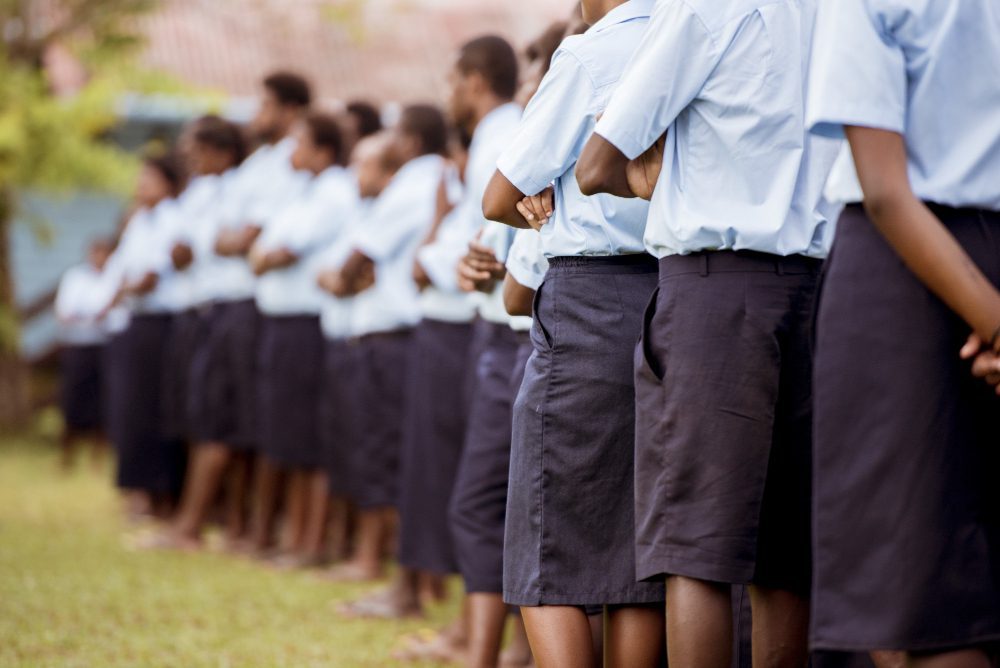2025 UTME: Did over 70% candidates truly fail, or was there a systemic manipulation?

Omoleye Omoruyi
The release of the 2025 Unified Tertiary Matriculation Examination (UTME) results by the Joint Admissions and Matriculation Board (JAMB) on May 9, 2025, has unleashed a firestorm of controversy across Nigeria.
The results show a staggering 78.5% of the 1,955,069 candidates (over 1.5 million) scoring below 200 out of a possible 400. So, there are accusations that they do not reflect candidates’ true abilities. Social media platforms, particularly X, are rife with outrage.
Users have called it a “big concern”, and others are decrying a “declining education system.”
In this report, Technext dives deep into the data, results over five years, examines JAMB’s official stance, explores potential causes, investigates historical precedents, and analyses systemic issues to uncover whether the 2025 UTME results are a true reflection of reality or a symptom of deeper systemic failures.
Before then, here you’ll see how to check your 2025 JAMB/UTME results online or using SMS
The 2025 UTME result is a statistical shockwave
The 2025 UTME result is an academic disaster – no mincing words. According to JAMB, only 420,415 candidates (21.5%) scored above 200, the unofficial benchmark for competitive university admissions, while 1,534,654 (78.5%) scored below.
The detailed breakdown is as follows:
320 and above: 4,756 candidates (0.24%)
300–319: 7,658 candidates (0.39%)
250–299: 73,441 candidates (3.76%)
200–249: 334,560 candidates (17.11%)
160–199: 983,187 candidates (50.29%)
140–159: 488,197 candidates (24.97%)
Below 140: 63,270 candidates (3.24%)
This distribution, which shows half of all candidates clustered in the 160–199 range, has raised alarm.
Only 0.63% (12,414) scored above 300, a sharp contrast to the expectations of many candidates who prepared rigorously. Also, JAMB withheld 97 results and placed 39,834 under investigation for malpractice, signalling a robust anti-cheating framework but also fuelling speculation about procedural fairness.
Comparative analysis: Five-year trend (2020–2025)
To understand the 2025 results, a comparison with the past five years is essential. The following table summarises key data:
Year Total candidates Scored above 200 % above 200 Notes
2020 1,949,983 275,206 14.11% Lower baseline, likely due to COVID-19 disruptions.
2021 1,338,687 ~201,803 (est.) ~15% (est.) Limited data; 45.62% scored 160+, reflecting post-COVID challenges.
2022 1,761,338 378,639 21.5% Recovery post-COVID, aligning with 2025 performance.
2023 1,595,779 ~340,456 (est.) ~21.3% (est.) Data sparse; assumed similar to 2022 based on trends.
2024 1,904,189 501,699 26.35% Peak performance, possibly due to better preparation or exam conditions.
2025 1,955,069 420,415 21.5% Drop from 2024, mirroring 2022, amid technical and systemic concerns.
UTME results from 2020-2025
Key observations:
Fluctuating performance: The percentage of candidates scoring above 200 has varied significantly, from a low of 14.11% in 2020 to a high of 26.35% in 2024. The 2025 drop to 21.5% reverses the upward trend, aligning with 2022’s performance but falling short of expectations given the 2024 peak.
Impact of external factors: The 2020 and 2021 results were likely affected by COVID-19 disruptions, including school closures and limited preparation. The recovery in 2022–2024 suggests stabilisation, but 2025’s decline raises questions about new variables.
Consistency in low scores: Most candidates consistently score below 200, with 2025’s 78.5% failure rate not far from historical norms (e.g., 85.89% below 200 in 2020). However, the scale of the 2025 failure, combined with public outcry, amplifies concerns.
JAMB’s official stance is to defend its integrity
JAMB, led by Registrar Prof. Ishaq Oloyede, has staunchly defended the 2025 results. In a press briefing, Oloyede emphasised that the outcomes are consistent with a 12-year trend, reflecting genuine candidate performance rather than inflated scores from past malpractice.
Key points from JAMB’s response include:
Anti-malpractice measures: JAMB’s zero-tolerance policy, bolstered by biometric verification and AI monitoring, reduced infractions. Only 97 candidates were caught for malpractice, and the 2,157 were flagged for fingerprint rejections, a significant improvement from previous years. The withholding of 39,834 results for investigation underscores rigorous oversight.
Technical improvements: JAMB delisted four CBT centres, including Soronara Ventures in Imo State, for technical deficiencies, signalling efforts to address infrastructure issues. Oloyede noted that these measures ensured a “credible” examination process.
Systemic reflection: The Minister of Education, Dr. Tunji Alausa, supported JAMB, arguing that the low scores reflect the success of anti-cheating policies, implying that previous years’ results were inflated by malpractice.
However, JAMB’s lack of detailed transparency, such as specifics on CBT glitches or scoring algorithms, has fuelled scepticism. The Board’s claim that the results reflect reality clashes with widespread perceptions of unfairness.
So, what caused the mass failure?
The 2025 UTME’s mass failure is likely the result of a complex interplay of factors, ranging from technical issues to systemic educational challenges.
Below, we explore the primary causes:
- Technical challenges in CBT administration
Anecdotal reports from candidates suggest significant technical issues during the CBT. Ugonma Perpetual, a candidate, reported that questions 1 to 10 in Use of English did not display at her centre, and the exam included more questions than stipulated.
Other candidates cited frozen screens, system lags, and mismatched question sets, which could have disrupted performance.
JAMB’s delisting of four centres for “technical deficiencies” confirms some issues, but the Board has not released a comprehensive report on the extent of these problems. Without an independent audit, it’s unclear how widespread these glitches were or their impact on the results.
- Scoring and standardization of opacity
JAMB’s scoring process, which involves scaling raw scores to account for exam difficulty, remains a black box.
Critics argue that inconsistencies in standardization could distort results, especially if algorithms were miscalibrated or if errors occurred during result compilation.
The lack of public access to raw data or scoring formulas makes it impossible to verify fairness. This opacity has led to speculation that the 2025 results may include computational errors, a concern echoed by parents on social media.
- Stricter anti-malpractice measures
JAMB’s enhanced anti-cheating protocols, including biometric verification and AI surveillance, have significantly reduced malpractice.
The Board reported only 97 confirmed cases of cheating, a sharp decline from previous years, and flagged 2,157 candidates for fingerprint mismatches.
While this strengthens exam integrity, it may have contributed to lower scores by exposing candidates previously reliant on cheating.
The Minister of Education’s claim that past results were inflated supports this theory, but it doesn’t fully explain the scale of the 2025 failure, as honest candidates also reported unexpectedly low scores.
- Systemic educational decay
Stakeholders, including former Anambra Governor Peter Obi, point to decades of underinvestment in education as a root cause. Nigeria’s 2025 education budget, at 7% of GDP, falls far short of UNESCO’s 15–20% recommendation, resulting in underfunded schools, unqualified teachers, and outdated curricula.
Analyst Isaac Onyechere noted that many candidates, including 40,247 underage ones, were unprepared, with some still in SS2 and lacking syllabus coverage. This systemic decay likely left candidates ill-equipped for the UTME’s rigour.
- Inequitable access and digital divide
Rural candidates face significant disadvantages, including limited access to CBT practice platforms, quality tutoring, and reliable internet for result checks. Network issues during the result-checking process further exacerbated frustrations.
The digital divide amplifies these inequities, disproportionately affecting candidates from underserved regions.
- Psychological and social pressures
The intense competition for approximately 600,000 university slots creates immense pressure, and candidates like Polite John Senyen, who has sat the UTME six times without admission, highlighted the emotional toll. The lack of counselling or support mechanisms from JAMB leaves candidates vulnerable to stress and demotivation, potentially impacting performance.
Historical precedents: Has this happened before?
Mass failures in the UTME are not unprecedented, but the 2025 scale and public reaction mark it as a significant event. Historical data reveal similar episodes:
1984–1989: Early UTME years saw high failure rates due to limited educational infrastructure and unfamiliarity with standardised testing. In 1984, only 15% of candidates scored above the equivalent of 200, prompting reforms in exam administration.
2004: A notable failure rate of 70% below 200 was attributed to widespread malpractice and poor preparation, leading to JAMB’s introduction of stricter invigilation protocols.
2010: Approximately 75% of candidates scored below 200, sparking protests and calls for educational reform. This led to the adoption of CBT in 2013 to enhance credibility.
2020: The 85.89% failure rate (below 200) was linked to COVID-19 disruptions, and school closures limited preparation time.
The 2025 failure rate of 78.5% is comparable to 2010 and 2020, but its context—post-COVID recovery, advanced CBT systems, and stringent anti-cheating measures—sets it apart.
Unlike past episodes, the 2025 controversy is amplified by social media, with posts from users reflecting a broader loss of trust in JAMB’s processes.
Analysis of historical parallels
While historical mass failures often led to reforms (e.g., CBT adoption post-2010), they also exposed systemic weaknesses.
The 2025 failure, like 2010, highlights underinvestment in education and technical challenges, but the current scale of public distrust is unprecedented. The 2020 failure was excused as a pandemic anomaly, but 2025 lacks such a clear external justification, making JAMB’s defence of “trend consistency” less convincing.
Case study: Physically challenged candidates
In Enugu, 41 physically challenged candidates under JAMB’s Equal Opportunity Group (JEOG) sat the 2025 UTME. While their results were released, one candidate was implicated in impersonation, raising questions about oversight even in specialised programs.
Interviews with JEOG participants revealed mixed experiences: some praised accommodations like braille and extra time, but others reported logistical issues, such as delayed exam starts, which could have affected performance.
This case underscores vulnerabilities in JAMB’s testing process, even for priority groups.
Potential causes beyond the obvious technical and systemic issues, other factors may have contributed:
Candidate overconfidence: The 2024 peak (26.35% above 200) may have led to complacency among 2025 candidates, underestimating the exam’s difficulty.
Curriculum misalignment: Some educators argue that secondary school curricula are not fully aligned with UTME requirements, leaving gaps in critical areas like mathematics and English.
Economic pressures: Rising poverty levels, with 40% of Nigerians living below the poverty line in 2025, may have limited access to study materials or tutoring, particularly for low-income candidates.
Bottomline
To address the 2025 controversy and prevent future crises, stakeholders propose:
Transparency and accountability: JAMB should publish detailed reports on CBT performance metrics, scoring methodologies, and technical issues.
An independent audit of the 2025 results, including CBT systems and scoring algorithms, could validate or refute claims of irregularities.
Educational reform: Increase education funding to meet UNESCO’s 15–20% GDP recommendation, focusing on teacher training and school infrastructure.
Introduce stricter UTME eligibility criteria, such as requiring five WAEC/NECO credits, to ensure only prepared candidates participate.
Candidate support: Establish counselling services and appeal mechanisms for candidates disputing results.
Simplify result-checking processes and address network issues to enhance accessibility
Technological upgrades: Invest in robust CBT infrastructure to minimise glitches, with regular pre-exam testing of systems.
Provide subsidised CBT practice platforms for rural and low-income candidates to bridge the digital divide.
UTME reveals an obvious truth
The 2025 UTME results have exposed deep fault lines in Nigeria’s education system, from technical vulnerabilities to chronic underinvestment. While JAMB’s anti-malpractice measures are a step toward credibility, the mass failure—78.5% scoring below 200—has shattered public trust.
The drop from 2024’s 26.35% to 2025’s 21.5% above 200, combined with historical parallels like 2010 and 2020, underscores the urgency of reform.
Technical glitches, opaque scoring, and systemic educational decay likely converged to produce these results, but without transparency, the truth remains elusive.






